Jiuquan: The Symphony of the Silk Road Legacy and the Dream of the Vast Sky
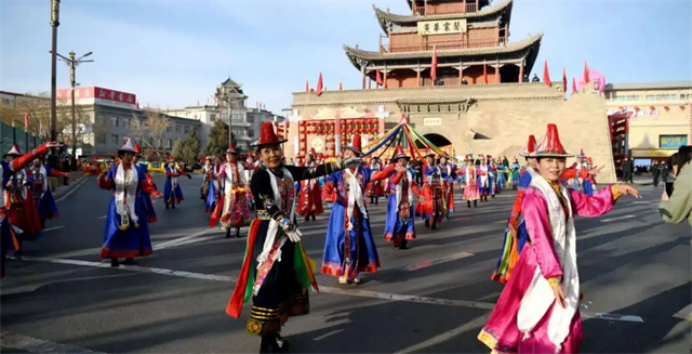
一、Introduction
Jiuquan is located in the north-west of Gansu, with a total area of 192,000 square kilometres, and is surrounded by the oasis corridor nourished by the Qilian snow and the vastness of the Gobi Desert. The magic of this land lies in:
Three mountains in two basins: Qilian Mountains, Horsehair Mountains, Haili Mountains surrounded by Jiuquan, Dunhuang, two major basins
Extreme drought laboratory: annual precipitation of less than 80 mm, but gave birth to the crescent moon springs and other ecological wonders
Time and space dividing line: Yangguan and Yumen Pass mark the geographical divide between the ancient Central Plains and the Western Regions.
Jiuquan Museum (located in Suzhou District, Jiuquan)
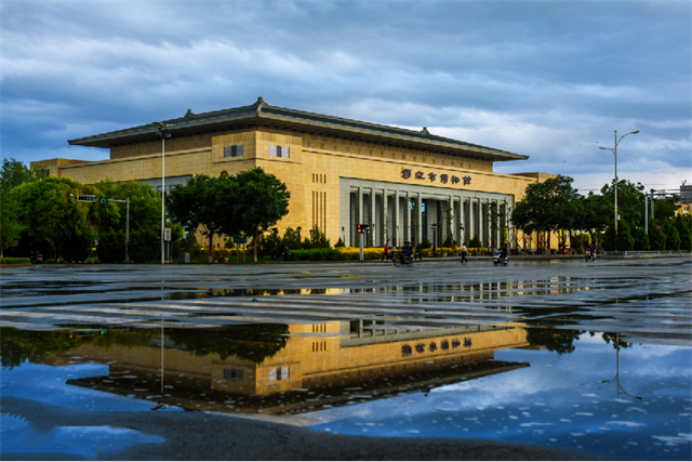
This historical treasure trove of the Hexi Corridor takes "The Boundless Desert and Long River · A Magnificent Chapter of the Silk Road" as its theme, where the Han Dynasty bronze wine vessel inscribed with the characters "Jiuquan" (Wine Spring) serves as the museum’s centerpiece, echoing the legendary tale of Huo Qubing pouring wine into a spring to share with his soldiers. Inside the exhibition halls, vivid scenes of feasting and kitchen preparations come to life on the tomb mural bricks from the Wei and Jin periods, while the Western Xia script edition of the "Diamond Sutra" and Uighur-language contractual documents bear witness to the convergence of diverse civilizations. Meanwhile, the dragon motifs adorning the glazed architectural components of the Ming Dynasty Prince Su’s mansion shimmer with the former glory of this frontier royal city.
Jiuquan Satellite Launch Center
(located at the junction of Jinta County, Jiuquan City, and Inner Mongolia)
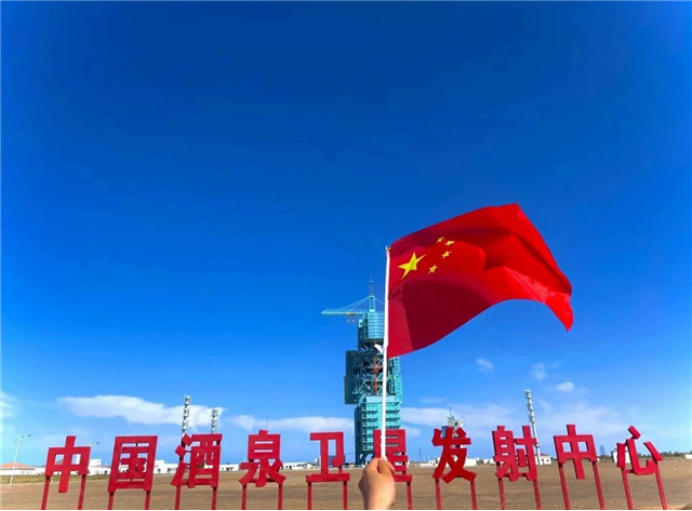
Deep in the Gobi Desert, this sacred site of space exploration resembles a modern-day myth. Towering launch pads, standing over a hundred meters tall, have propelled Shenzhou spacecraft into the heavens, while the footprints of Yang Liwei remain faintly visible outside the gates of the Wentian Pavilion. In the nearby martyrs' cemetery, over 700 tombstones face the launch site, joining the handwritten manuscripts of Qian Xuesen on the walls of the Dongfeng Auditorium to compose a three-dimensional epic of China's space endeavors. The slogans proclaiming the spirit of being "exceptionally capable of enduring hardship"* gleam even brighter amidst the sandstorms.
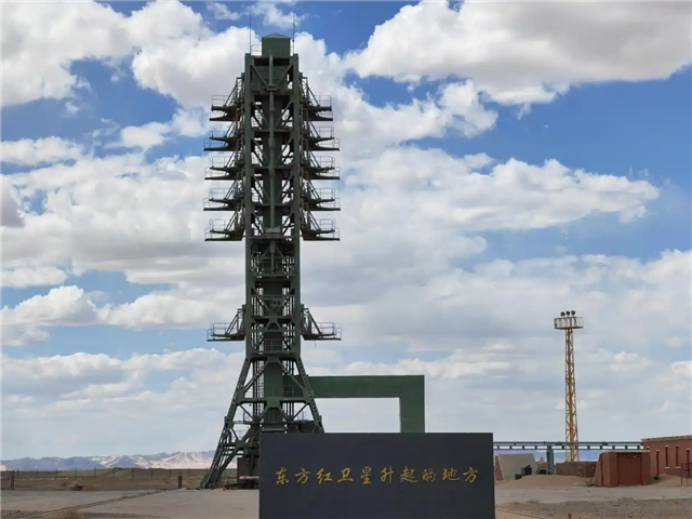
Manned Launch Site: Witness the entire process of the birth of the "Divine Arrow"*(Shenzhou rocket).
The Manned Launch Site serves as a critical hub for China's space program, capable of carrying out rocket assembly, testing, transportation, and launch missions. From the historic Shenzhou-5 mission that inaugurated China's manned spaceflight endeavors to subsequent missions, it has witnessed one remarkable feat after another, making indelible contributions to the nation's aerospace achievements. The manned launch tower, known as the "921 Tower," stands as one of the iconic structures of the Jiuquan Satellite Launch Center and remains China's only operational launch tower capable of supporting manned rocket launches.
Jiuquan Shengji Park
(Located in the old town of Suzhou District, Jiuquan City)
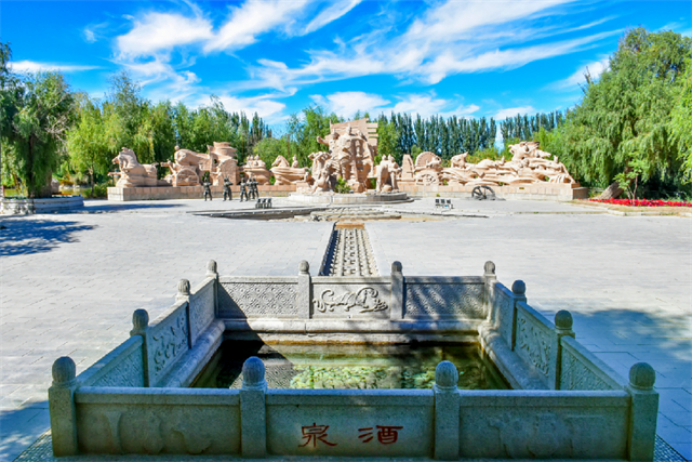
This historical garden centers around the legend of Huo Qubing rewarding his troops, where the ancient "Wine Spring" still flows with amber-hued waters that have shimmered for two millennia. The weeping willows planted by Zuo Zongtang still drape like curtains, while the Qing Dynasty Jiuquan Pavilion harmonizes with Han-Tang-style moon gates. In the stele corridor, rubbings from the Monument to the Achievements of the Tang Dynasty's Hexi Military Governor engage in a timeless frontier poetry dialogue with contemporary calligraphers' inscriptions of "Drunk and Lying on the Battlefield" beneath grape trellises.
Yulin Grottoes
(Located in a desert canyon 70 km southwest of Guazhou County, Jiuquan City)
Hidden in a remote desert valley 70 kilometers southwest of Guazhou County lies the "sister grotto" of Dunhuang's Mogao Caves—the Yulin Grottoes. Sharing the same artistic lineage as Mogao in style and painting techniques, this gem of Dunhuang cave art is renowned for its exquisite murals. Cave 25 boasts the best-preserved murals, featuring meticulously composed scenes dominated by serene blue-green hues that exude classical elegance, with delicate and fluid brushwork exemplifying mid-Tang Dynasty artistry.
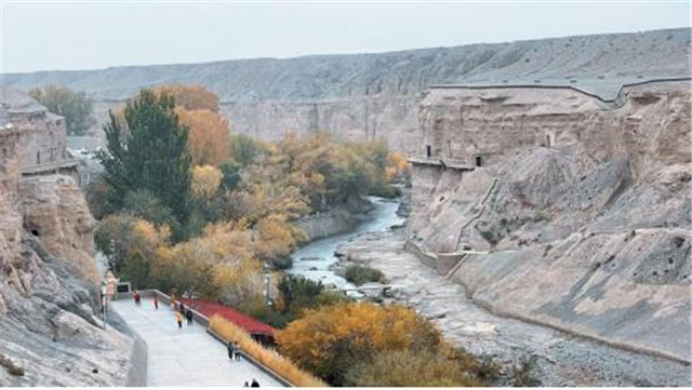
The site preserves 43 fully decorated caves (32 on the eastern cliff, 11 on the western) containing over 270 painted sculptures and 5,200 square meters of murals—mostly created during an 800-year span from the Tang to Yuan dynasties. Covering about one-ninth of Mogao's total mural area, this treasure trove of Buddhist art, designated in China's first batch of nationally protected heritage sites, ranks second only to Mogao in artistic significance.
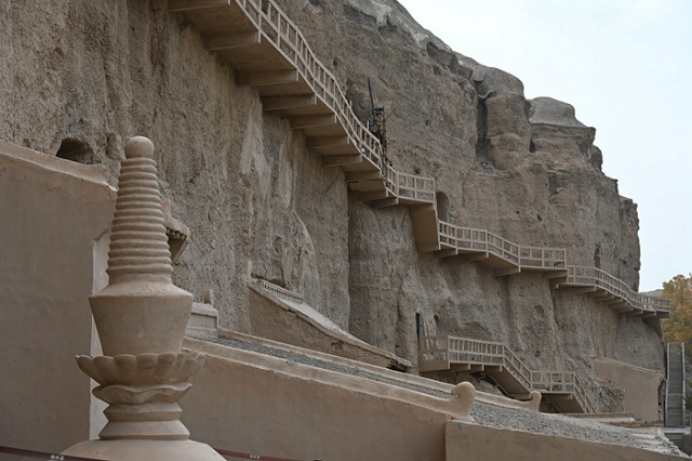
Jinta Populus Euphratica Forest
(8 km west of Jinta County along the Heihe River)
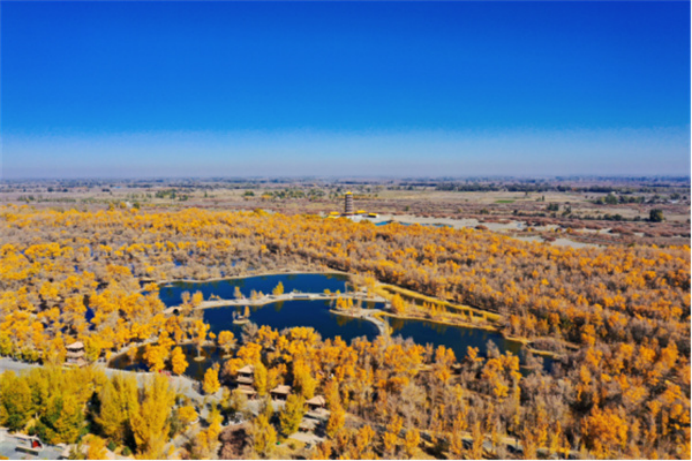
This three-millennia-old wonder of life elevates desert aesthetics to its zenith. Each autumn, 100,000 golden poplars dye the waters molten bronze, while dead trunks thrust skyward like stubborn bronze sculptures—their cracked bark etching the hydrological history of the Heihe River. When Yugur herders' camel trains pass through, their rippling reflections transform into schools of golden fish, evoking the mythical Jianmu tree that bridged earth and heaven.
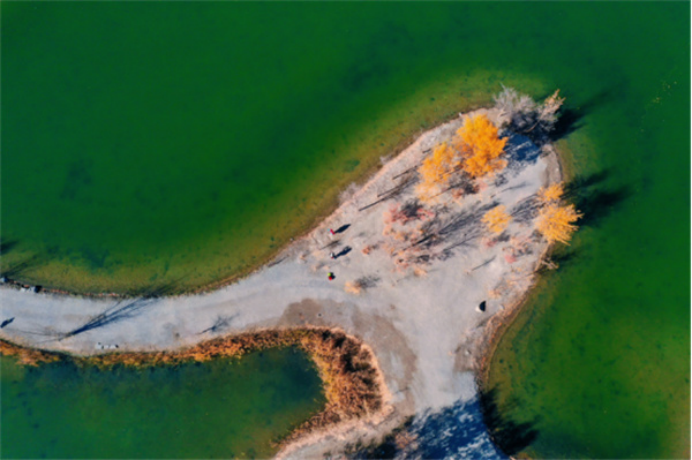
Jinbo Lake, the heart of this poplar kingdom, offers prime waterside photography with mirror-like reflections of towering trees, gnarled trunks, and fluttering yellow leaves. With arched bridges, rippling waves, and playful white geese, the scene could almost pass for a Jiangnan watertown—were it not for the golden poplars.
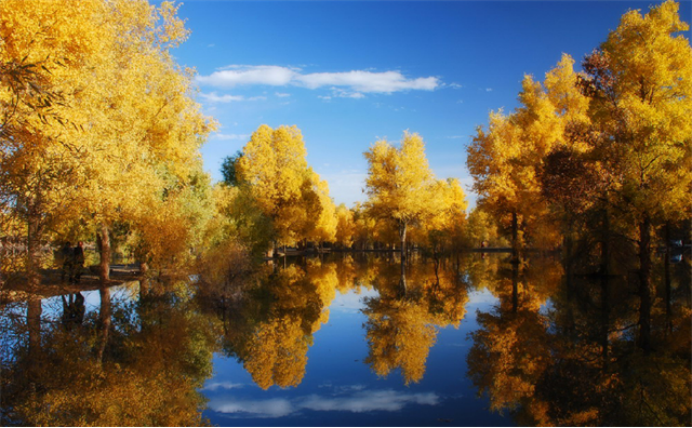
Beyond the iconic trees, the reserve dazzles with floral spectacles: seas of purple verbena, scarlet sage, and golden zinnias release sweet fragrance into the breeze. As wind stirs the blossoms into undulating rainbows of color, visitors can immerse in desert adventures—from dune surfing and sandboarding to camel trekking—amid this symphony of desert ecology.
Jiuquan: The "Hu Guo" Legend of the Gobi Oasis
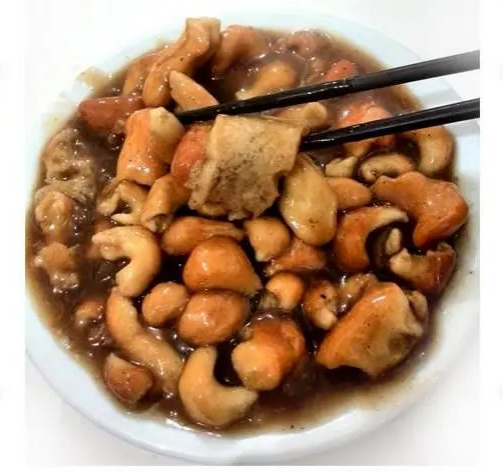
Hu Guo (Thick Soup with Noodles and Crullers)
